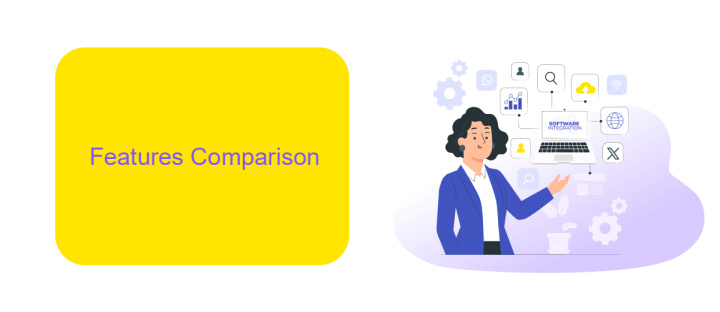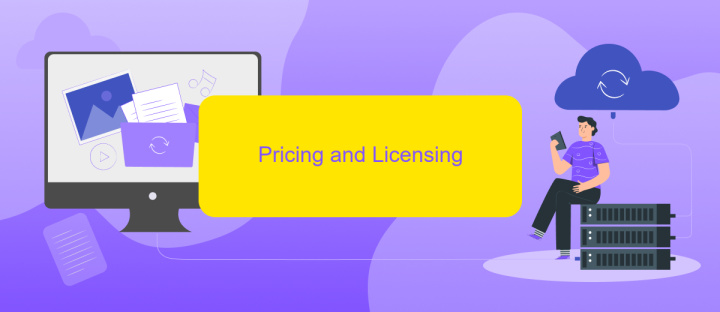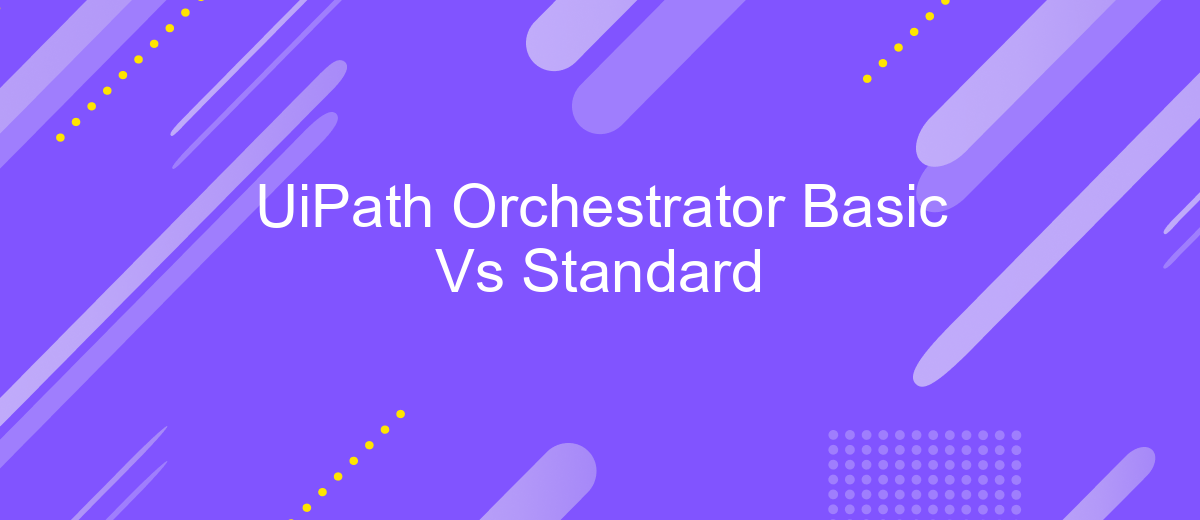UiPath Orchestrator Basic Vs Standard
When it comes to automating business processes, choosing the right tools is crucial. UiPath Orchestrator offers two main versions: Basic and Standard. This article explores the key differences between these versions, helping you understand which one best suits your needs. From deployment capabilities to feature sets, we'll break down what each version offers to streamline your automation journey.
UiPath Orchestrator Basic vs Standard Overview
UiPath Orchestrator is available in two versions: Basic and Standard. Both versions offer robust automation management capabilities, but they cater to different needs and scales of operations.
- Basic: Ideal for small to medium-sized businesses, the Basic version provides essential features such as job scheduling, asset management, and basic monitoring. It is designed to be cost-effective while still delivering core functionalities.
- Standard: Suitable for larger enterprises, the Standard version includes advanced features like multi-tenancy, enhanced security, and extensive analytics. It also supports more complex automation workflows and integrations.
For businesses looking to integrate UiPath Orchestrator with other applications, services like ApiX-Drive can be invaluable. ApiX-Drive facilitates seamless integration without the need for coding, allowing for efficient data flow between UiPath and other systems. This ensures that automation processes are streamlined and scalable, regardless of the Orchestrator version in use.
Features Comparison

When comparing UiPath Orchestrator Basic and Standard, several key features stand out. The Basic version offers essential functionalities such as job scheduling, robot management, and basic monitoring capabilities. However, it lacks advanced features like multi-tenancy, which allows for the segregation of data and resources across different departments or clients. The Standard version, on the other hand, supports multi-tenancy, providing a more robust environment for larger organizations with complex automation needs.
Another significant difference lies in integration capabilities. While the Basic version provides standard API access for basic integration needs, the Standard version offers enhanced integration features, making it easier to connect with third-party services. For instance, using a service like ApiX-Drive, businesses can streamline their workflows by automating data transfer between UiPath Orchestrator and other applications. This level of integration is crucial for organizations aiming to build a seamless and efficient automation ecosystem. Overall, the Standard version is better suited for enterprises requiring comprehensive automation solutions and advanced integration options.
Pricing and Licensing

When considering UiPath Orchestrator, understanding the pricing and licensing options is crucial for making an informed decision. Both Basic and Standard versions come with distinct pricing structures tailored to different organizational needs.
- Basic Version: This version is designed for smaller teams or individual developers. It offers essential features at a lower cost, making it accessible for startups or small businesses.
- Standard Version: Aimed at larger enterprises, this version includes advanced features and integrations. The pricing is higher but justified by the comprehensive capabilities and scalability it offers.
Both versions offer flexible licensing options, including annual and monthly subscriptions. Additionally, for businesses looking to integrate UiPath Orchestrator with other services, tools like ApiX-Drive can simplify the process, providing seamless connectivity and automation. Evaluating your specific needs and budget will help determine the best fit for your organization.
Use Cases and Industries

UiPath Orchestrator, both Basic and Standard versions, serve different use cases across various industries. Basic Orchestrator is ideal for small to medium-sized businesses that need straightforward automation management without extensive customization. Standard Orchestrator, on the other hand, is more suited for large enterprises requiring advanced features, scalability, and integration capabilities.
In the financial sector, Basic Orchestrator can handle routine tasks like data entry and report generation, while Standard Orchestrator can manage complex workflows and regulatory compliance. In healthcare, Basic Orchestrator can automate patient data management, whereas Standard Orchestrator can integrate with various medical systems and ensure data security.
- Retail: Inventory management, customer service automation
- Manufacturing: Supply chain optimization, quality control
- Telecommunications: Customer support, billing automation
Additionally, services like ApiX-Drive can enhance the capabilities of UiPath Orchestrator by facilitating seamless integrations with other software solutions. This is particularly useful for businesses looking to streamline their processes and improve overall efficiency. Whether you choose Basic or Standard, UiPath Orchestrator offers robust solutions to meet the diverse needs of various industries.
Conclusion
In conclusion, both UiPath Orchestrator Basic and Standard offer robust solutions for managing and automating workflows. The Basic version is ideal for small to medium-sized businesses that require essential automation features without the need for extensive customization. On the other hand, the Standard version provides advanced functionalities and scalability, making it suitable for large enterprises with complex automation needs.
When considering integrations, tools like ApiX-Drive can significantly enhance the capabilities of either version by streamlining the connection between various applications and services. This can lead to more efficient workflow automation and better data management. Ultimately, the choice between UiPath Orchestrator Basic and Standard will depend on your specific requirements, budget, and long-term automation strategy.
FAQ
What is the main difference between UiPath Orchestrator Basic and Standard?
Can I upgrade from UiPath Orchestrator Basic to Standard?
Are there any limitations on the number of robots in the Basic version?
Does the Basic version support advanced analytics and reporting?
What options do I have for integrating UiPath Orchestrator with other systems?
Time is the most valuable resource in today's business realities. By eliminating the routine from work processes, you will get more opportunities to implement the most daring plans and ideas. Choose – you can continue to waste time, money and nerves on inefficient solutions, or you can use ApiX-Drive, automating work processes and achieving results with minimal investment of money, effort and human resources.

